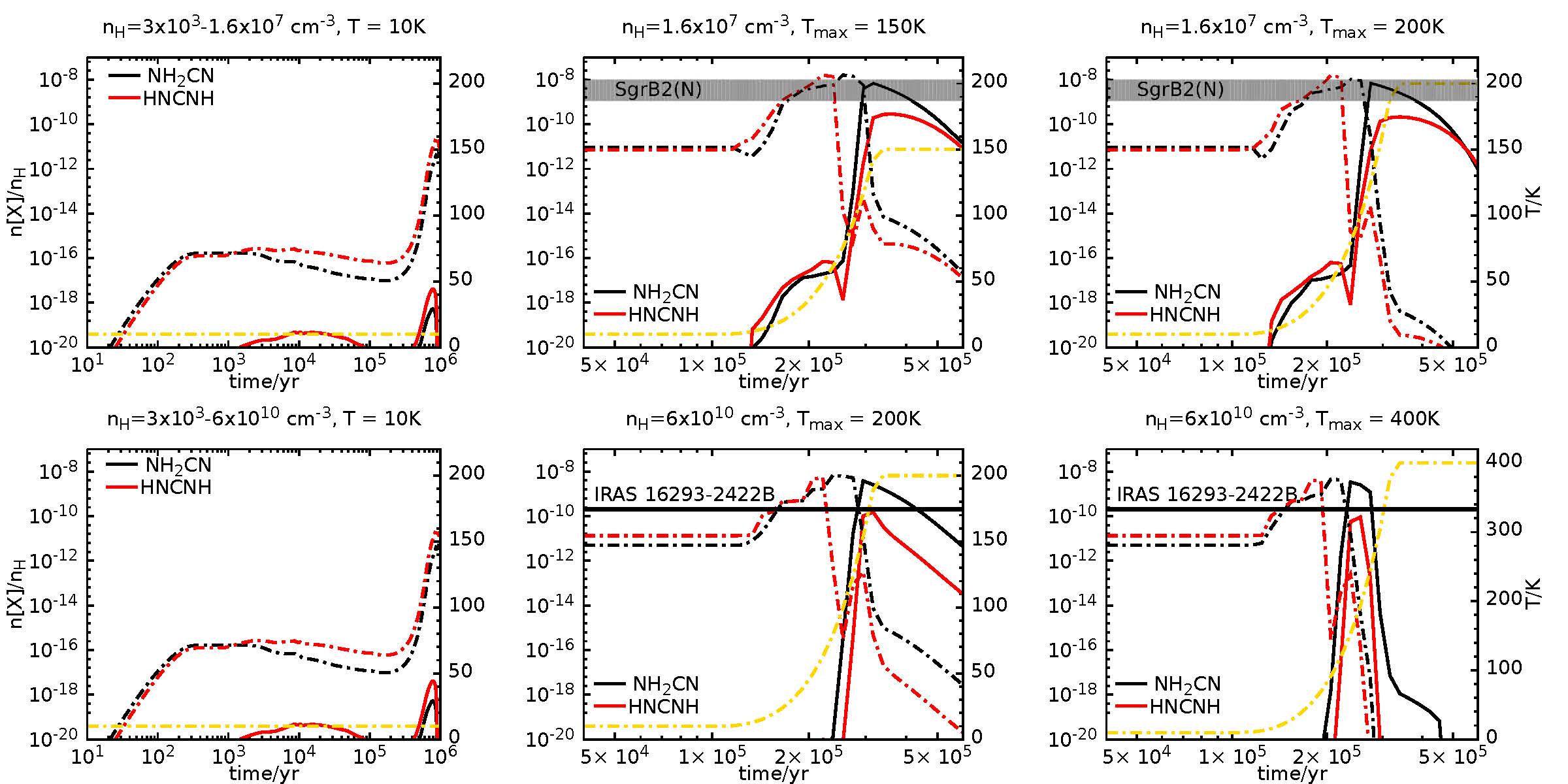Prebiotic molecules are the building blocks of life, or the raw materials from which these building blocks formed, and are believed to have been delivered to Earth by comet-like objects. These molecules can develop within stars or planets and have played a critical role in the origin of life on Earth.
Cyanamide (NH2CN) and its isomer carbodiimide (HNCNH) are significant prebiotic molecules found in the interstellar medium. They can undergo a series of chemical reactions to form adenine nucleobases, which are a crucial component of the genetic material RNA and DNA. Due to its widespread presence in interstellar space, cyanamide is considered an essential contributor to the formation of prebiotic molecules and the emergence of life.
Researchers from the Astrochemistry Group of Xinjiang Astronomical Observatory, Chinese Academy of Sciences, along with their collaborators, have published a study in the Monthly Notices of the Royal Astronomical Society, which outlines a chemical reaction network for cyanamide and its isomers. The study uses theoretical chemical research and applies the three-phase NAUTILUS chemical code to simulate the formation and destruction of cyanamide and carbodiimide in various interstellar physical environments.
In the study, the researchers applied cold core, hot corino/core, and shock models to analyze cyanamide and its isomers' chemical evolution in different environments. According to their findings, cyanamide and carbodiimide are mainly produced through free radical reactions on grain surfaces. Additionally, the study suggests that surface chemistry contributes to the early evolutionary stages of these molecules, which are then released back into the gas phase and observed.
As astronomical technology continues to progress, it is expected that more interstellar prebiotic molecules will be detected, leading to further research opportunities to explore the universe's unexplored parts, like the origin of cosmic life.

Figure 1. The calculated abundances of NH2CN and HNCNH in the gas phase and on grain mantles, including surface and icy mantle, are plotted versus time for freefall collapse and warm-up stages in hot core/hot corino models. Solid lines correspond to the gas-phase abundances and dotted lines indicate abundances on the grains. The grey rectangle represents the observed abundance with ±a factor of 3 uncertainty for NH2CN in Sgr B2(N), while the horizontal lines are showing upper limit of NH2CN abundances towards IRAS 16293–2422B. Golden dotted lines denote temperature profiles.
Contact: ZHANG xia
Xinjiang Astronomical Observatory,Chinese Academy of Sciences
Email: zhangx@xao.ac.cn
Article link: https://doi.org/10.1093/mnras/stad627